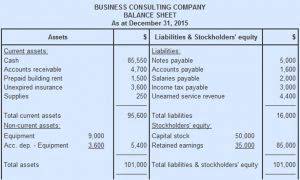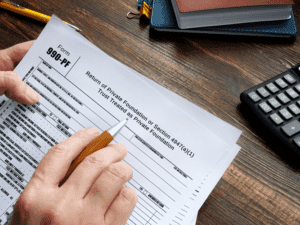
Let’s look at one of the journal entries from Printing Plus and fill in the corresponding ledgers. Later, on Mar 31, we pay back the full amount of $1,000 to our friend in order to honor the promissory note we have issued on January 1. Accounts Payable decreases (debit) and Short-Term Notes Payableincreases (credit) for the original amount owed of $12,000. WhenSierra pays cash for the full amount due, including interest, onOctober 31, the following entry occurs. A bank time deposit (savings deposit) that cannot be withdrawn until a specified date. If the amount deposited in a CD needs to be withdrawn prior to its maturity date, a penalty is assessed by the bank.
- Financial institutions are key providers of debt capital, offering various loan products to businesses.
- Unlike cash-basis accounting, accrual accounting suggests recording a transaction in financial records once it occurs, regardless of when cash is paid or received.
- The 500 year-old accounting system where every transaction is recorded into at least two accounts.
- The income statement shows the interest expense account, which represents the interest accrued on notes payables during the period.
- An adjusting journal entry is typically made just prior to issuing a company’s financial statements.
- As can be seen the first payment is due at the end of the accounting period (December 31).
Adjusting Entries – Asset Accounts

In the preceding note, Oliva has agreed to pay to BancZone $10,000 plus interest of $400 on June 30, 20X8. The interest represents 8% of $10,000 for half of a year (January 1 through June 30). From the above table, the annual principal payments vary Record Keeping for Small Business from year to year. In year 1, the principal payment is only $4,089 while the final principal payment at the end of year 6 is $6,009. These loans provide the necessary capital without straining the company’s cash flow.
- Because Bad Debts Expense is an income statement account, its balance will not carry forward to the next year.
- However, we usually need to bear the interest on the note payable when we issue the promissory note to purchase the equipment from the vendor.
- The interest expense is a type of expense that occurs through the passage of time.
- Understanding the relationship between these accounts is essential for accurate financial reporting and analysis.
- If this is the case, we should record the accrued interest at the month-end adjusting entry as time passed.
- On February 1, 2019, the company must charge the remaining balance of discount on notes payable to expense by making the following journal entry.
Advance Your Accounting and Bookkeeping Career
Every credit transaction affects the AP ledger and some other relevant ledger. A natural part of growing your business is accumulating suppliers and making purchases on credit to drive your operations. As of October 1, 2017, Starbucks had contra asset account a total of $1,288,500,000 in stored value card liability. According to the calculations, the total amount due on May 1st will be the principal amount plus interest payable.
- To assist you in understanding adjusting journal entries, double entry, and debits and credits, each example of an adjusting entry will be illustrated with a T-account.
- An interest-bearing note specifies the interest rate charged on the principal borrowed.
- In the first instance the note payable is issued in return for cash, in the second they are issued in return for cancelling an accounts payable balance.
- The two examples of adjusting entries have focused on expenses, but adjusting entries also involve revenues.
- To avoid these errors, ensure proper training for accounting staff, implement a review process, and maintain clear documentation.
- The short term notes payable are classified as short-term obligations of a company because their principle amount and any interest thereon is mostly repayable within one year period.
- This means that the preliminary balance is too high by $375 ($1,100 minus $725).
Accounts Payable Journal Entries
This similarity extends to other retailers, from clothing stores to sporting goods to hardware. No matter the size of a note payable journal entry company and no matter the product a company sells, the fundamental accounting entries remain the same. When filling in a journal, there are some rules you need to follow to improve journal entry organization.


And December 31 is our period-end adjusting entry in which we need to close the company’s account for the year. We can make the accrued interest expense journal entry by debiting the interest expense account and crediting the interest payable account at the period-end adjusting entry. When a company decides to repay a note payable before its maturity date, it may incur a gain or loss depending on whether the repayment amount is less than or greater than the carrying amount of the note. The journal entry for the early repayment of notes payable includes recording the payment of the principal, any accrued interest, and recognizing any gain or loss on the repayment. Meticulous recording of notes payable and bonds payable through proper journal entries is a cornerstone of sound financial management. It ensures compliance, transparency, and reliability in financial reporting, which are essential for maintaining stakeholder trust and achieving long-term financial stability.

The interest expense is a type of expense that occurs through the passage of time. Hence, we may need to make the journal entry for the accrued interest on the note payable at the period-end adjusting entry even though we have made not the payment yet. We may issue the promissory note when we borrow the money from our friends and promise to pay them back within a certain period of time. However, we may also issue the promissory note to our supplier in business when we cannot settle our accounts payable on time. The accounting method under which revenues are recognized on the income statement when they are earned (rather than when the cash is received).